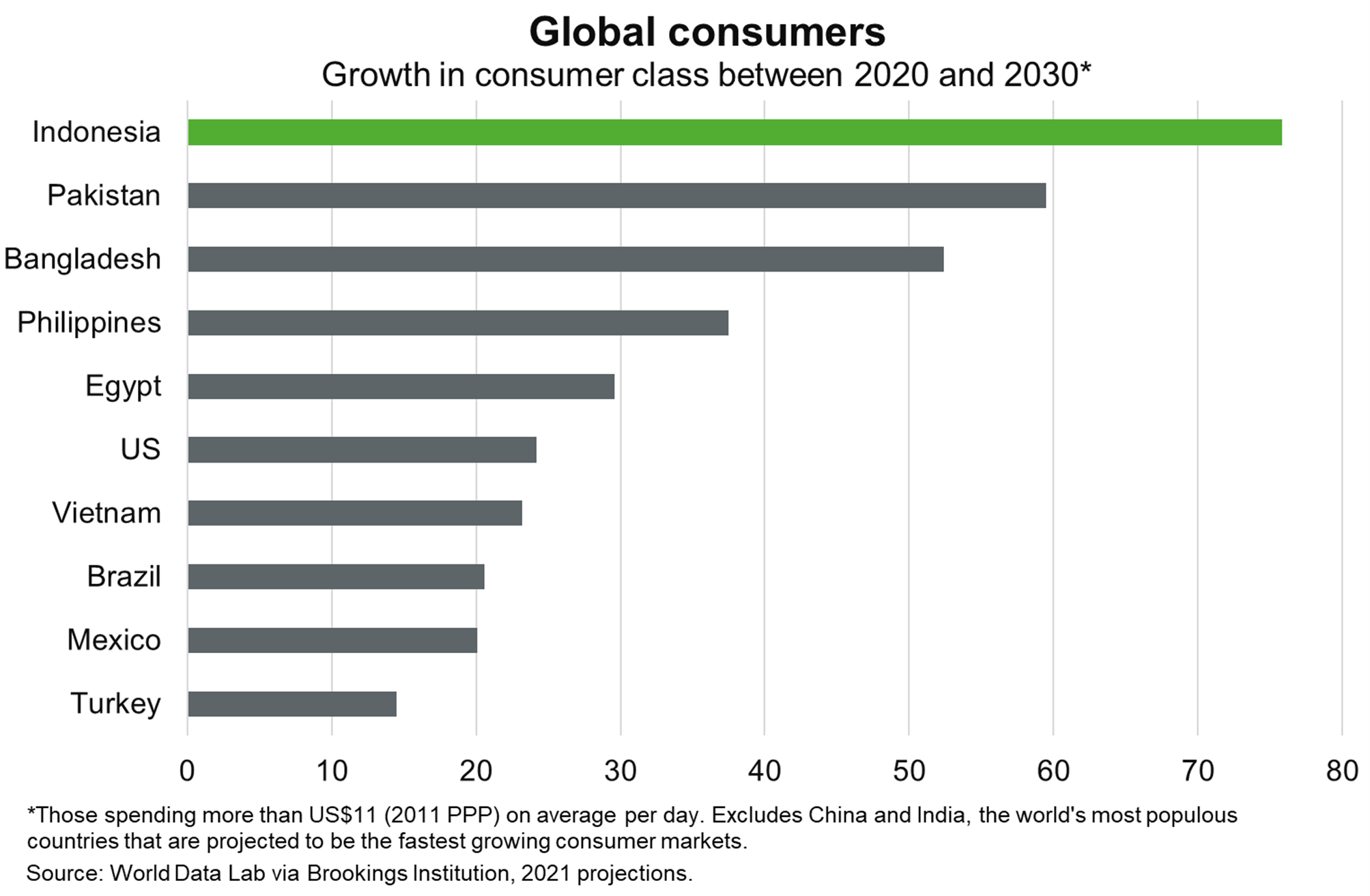Indonesia—Robust economic growth raises incomes and middle class
Indonesia’s real GDP grew at 5.2% year-over-year in Q2 highlighting strong household and government spending, even as exports moderated alongside falling commodity prices. These trends are likely to persist; the IMF forecasts growth to average a solid 5% per annum over the next five years.
Strength in consumer spending will be supported by rising incomes and favourable demographics. Indonesia has a large, growing and youthful (median age of about 30) population of more than 270 million. The IMF projects per capita incomes to rise above US$7,000 in 2028, up from around US$5,000 in 2022. The Brookings Institution estimates 76 million Indonesians will join the consumer class by 2030, spending more than US$11 (in 2011 PPP dollars) per day (Chart). That would see Indonesia become the fourth biggest consumer market in the world behind China, India and the US. The government aims to further raise incomes to US$25,000 by 2045 through higher spending on social protection and education and increasing domestic processing of mining and agriculture commodities. Indeed, food consumption is projected to rise fourfold between 2009 to 2050.
Meanwhile, a focus on increasing infrastructure investment will help Indonesia capitalise on the global shift toward clean energy technologies, facilitating domestic productive capacity and enhancing access to export markets. Reforms to remove regulatory obstacles to investment and address labour market rigidities should also make it easier to do business and spur foreign investment. Indeed, alongside a rising foreign investment trend in Southeast Asia, Indonesia attracted US$45 billion in domestic and foreign investment in H1 2023, following record 2022 investment inflows of US$81 billion. Rising incomes, increasing consumption and growing infrastructure development alongside higher commodity prices have already helped drive record Australian exports of $14.6 billion in 2022, up 80% from the pre-COVID level of $8 billion in 2019, making Indonesia our 11th largest export market.

